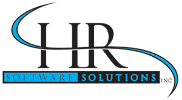Temporary employment in the U.S. is a booming industry that can provide an excellent layer of support for a company implementing HR systems for the first time—in addition, temp workers can enhance HR project management by performing a range of tasks that make payroll and HR software easier to maintain.
According to recent figures released by the U.S. Bureau of Labor Statistics, temp employment rose by 7.46 percent in May. Overall, this field has come to occupy 1.98 percent of the workforce.
“With a gain of 175,000 jobs in May, the resilient labor market sustained moderate job gains this spring,” The Conference Board revealed in a statement. “The sequester, along with the negative impact from slowing global trade, are being offset by the continued contribution from the revival in the housing market and stronger consumption.”
More than 25,000 temporary employment services jobs were added to the U.S. economy in May on a seasonally adjusted basis. Previously, year-over-year growth in seasonally-adjusted temp jobs commanded more than 11 percent of the workforce in July 2012, but declined in August 2012 to 9.6 percent, Staffing Industry Analysts reported.
For employers, the burgeoning field of temp employment offers a myriad of benefits, not the least of which is the fact that full-time employment candidates can be vetted by an outside agency to better meet the needs of a particular business.
Taking on a new employee can be expensive and timely for companies, resulting in additional hours of labor and spent resources. If a prospective hire is not an overall match for a workplace’s aims, this may not reveal itself in an initial interview, but instead take several months.
However, with temp workers, employers can gain a valuable sense of a person’s intelligence, commitment and capabilities before even adding them to the company’s payroll and HR software systems.

